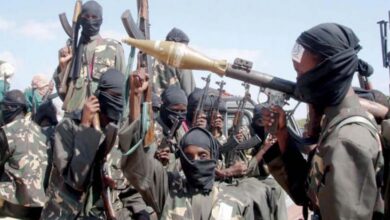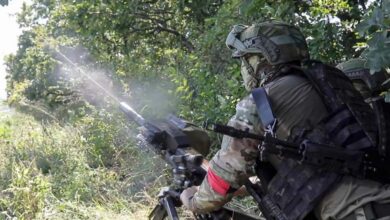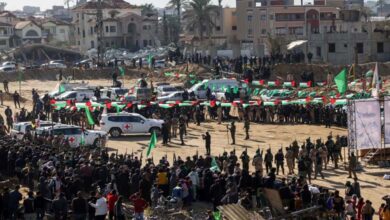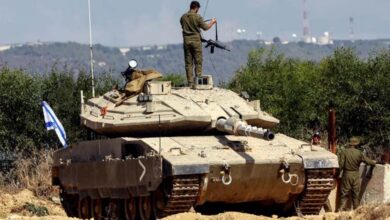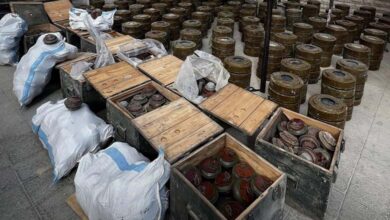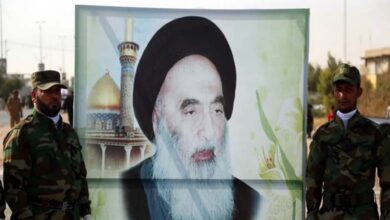Hamas reveals unprecedented skills and capabilities in the Gaza war

Hamas leverages its knowledge of the terrain and extensive tunnel network to turn Gaza’s streets into a deadly maze, capitalizing on its mastery of guerrilla warfare
Israeli military experts, an Israeli commander, and a Hamas source have disclosed how the Palestinian movement utilizes its weapons stockpile and expertise in terrain and a vast tunnel network to transform Gaza‘s streets into a deadly maze.
The death toll among the Israeli army in the Gaza Strip has risen to nearly double that of the losses incurred in its ground offensive in 2014, reflecting the extent of its penetration into the territory and Hamas‘s adeptness in employing guerrilla warfare tactics and its large arsenal of weapons.
The movement employs weapons such as drones armed with hand grenades and anti-tank weapons with double-layered explosive charges that detonate in rapid succession.
Since the start of the Israeli ground campaign in late October, approximately 110 Israeli soldiers have been killed as tanks and infantry soldiers infiltrated cities and refugee camps, according to official Israeli figures. About a quarter of this number comprised tank crews.
This figure is compared to around 66 soldiers who died in the 2014 conflict when Israel launched a limited three-week ground incursion, but the objective at that time was not to eliminate Hamas.
Retired Israeli General Yaakov Amidror, a former national security advisor currently working at the Jewish Institute for National Security of America, stated, “The scale of this war cannot be compared to 2014, when our forces’ operations mostly did not exceed one kilometer inside Gaza.” He added that the army has not yet found a good solution to the tunnels, a network that has significantly expanded in the past decade.
The Israeli offensive began after armed individuals from Hamas crossed the border on October 7, leading to the killing of 1,200 people and the holding of over 200 hostages, some of whom were later released.
Since the start of the war, nearly 19,000 Palestinians in Gaza have been killed, prompting international calls for a ceasefire and U.S. calls to change Israeli strategy in the war and deliver more precise strikes.
Israeli Prime Minister Benjamin Netanyahu stated on Thursday that Israel would wage war “until clear victory.” Israeli officials suggest that it may take months to conclude the war.
Ofer Gendelman, Netanyahu’s foreign policy advisor, told Reuters, “It has been a challenge from day one,” adding that the attack has had a “steep price” for the Israeli forces. He continued, saying, “We know we will likely have to pay an additional price to complete the mission.”
Hamas has released video clips on its Telegram channel this month, showing fighters carrying cameras and maneuvering through buildings to launch shoulder-fired missiles at armored vehicles. One such clip was published on December 7 in the Shujaiya neighborhood east of Gaza City, an area both sides mentioned as witnessing intense fighting.
In another post dated December 5, a camera emerges from a tunnel in what appears to be a periscope to survey an Israeli camp where forces are resting. The post stated that this site was later subjected to an underground explosion.
A Hamas source speaking from inside Gaza, who refused to disclose his identity, said that the fighters get as close as possible to set up ambushes, “benefiting from their field experience and knowledge of the terrain that they know better than anyone else.” He added, “There is a gap between what we have in terms of force and their arsenal; we are not fooling ourselves.”
Hamas has not disclosed the number of casualties among its fighters. The Israeli army claims to have killed at least 7,000 militants. The movement previously rejected the number announced by Israel, stating that it includes civilians.
An Israeli commander who fought in 2014 said that the scope of this operation indicates a larger presence of forces on the ground, giving Hamas “the advantages of the defending party,” so larger losses among the forces were expected. The commander requested not to mention his name as he is still part of the reserve forces in this war.
The Israeli army does not disclose the numbers of participating forces or any other specific details related to the operations.
Footage broadcast by Israeli Channel 12 showed a reserve unit firing cautiously at the wall of a building before entering a room to discover an ammunition cache.
In a tradition of its methods used in 2014, the Israeli army posts pictures on social media showing roads made by bulldozers so that forces can avoid existing roads that may contain landmines.
Intense fighting continues in some areas in northern Gaza, where many buildings have turned into rubble.
Eyal Pinko, a former senior official in Israeli security agencies currently working at the Begin-Sadat Center for Strategic Studies at Bar Ilan University, said, “Hamas has taken some big steps to build its strength since 2014.” He added that Iran, a Hamas ally, helped smuggle some advanced weapons, such as Russian-made Kornet anti-tank missiles, to the movement.
However, he pointed out that Hamas has mastered the production of other weapons in Gaza, such as R.P.G.-7 rocket-propelled grenades, and that militants now have a larger ammunition stockpile.
The movement has stated in its posts that its weapons include anti-tank shells containing two explosive charges to penetrate armor, which Pinko also mentioned are part of the fighters’ arsenal.
Many posted videos by Hamas show large explosions when hitting armored vehicles. Israeli military experts suggest that the explosion does not necessarily mean the vehicle’s destruction as it could be caused by defensive systems detonating to stop incoming projectiles.
Ashraf Abu al-Houl, the editor-in-chief of Al-Ahram newspaper in Egypt and a former Gaza-based journalist specializing in Palestinian affairs, stated that militants get as close as possible to launch missiles and locally-made projectiles.
However, he added that Israeli drones and other means weaken the movement’s ability to surprise the forces even in urban areas. He noted that fighting in cities has become more challenging for the fighters.
The Israeli army posted a video clip this month, claiming to show militants emerging from a tunnel beneath a building before being targeted with missiles.
Alexander Grinberg, a former official in Israeli military intelligence working at the Jerusalem Institute for Strategy and Security, said, “Hamas may deploy its new weapons and methods, (but) fundamentally, it remains a guerrilla-style resistance movement.”



